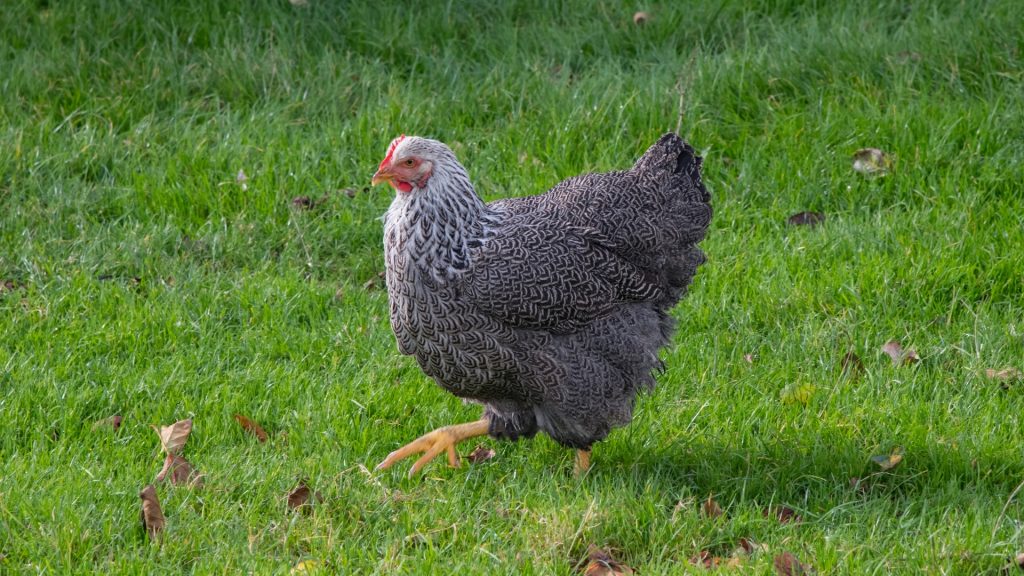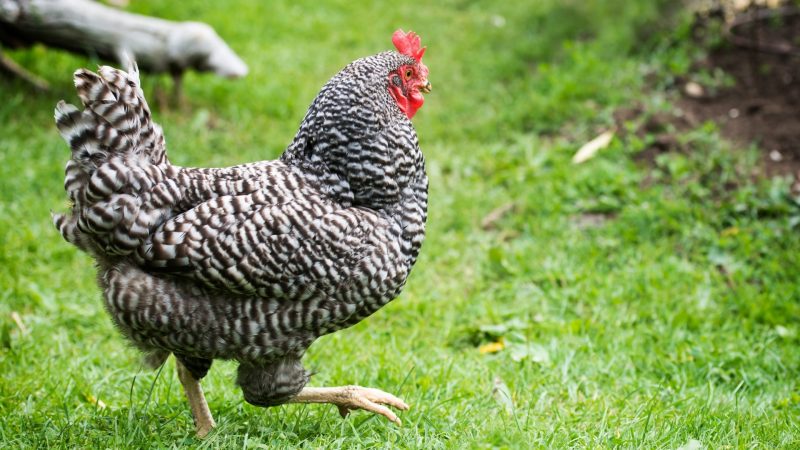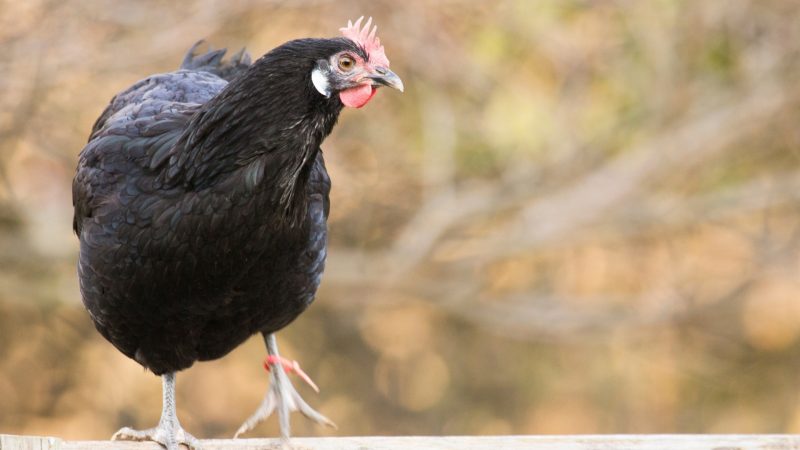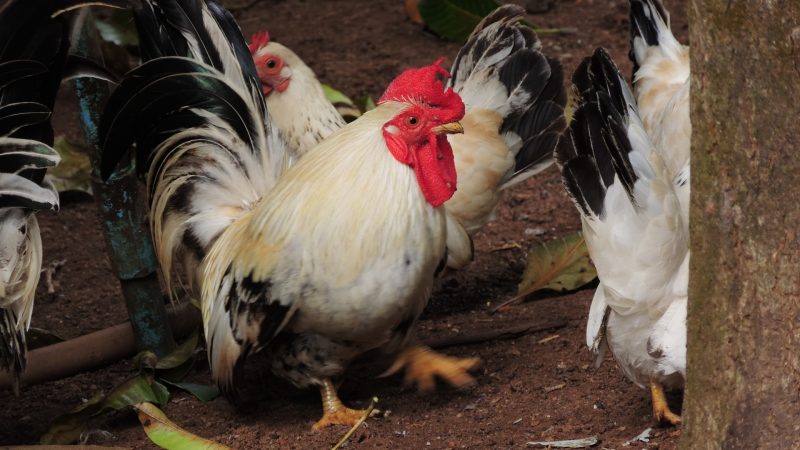When discussing chicken breeds, it’s essential to mention the color of the chicken. Color helps you identify the chicken breed and its characteristics. It can also determine if the chicken will be used for eggs or poultry, what color and size the eggs will be, and a variety of other important information.
What are black and white chicken breeds? Black and white chicken breeds have evolved to have both colors featured in their feathers, typically as a repeating pattern with more emphasis on the color black. The coloring of these chicken breeds depends on the origin of their location and their breed type.
Keep reading to learn more about different black and white chicken breeds, how long they’ve been around, and their roles. If you own black and white chickens or are thinking about owning one, this article can guide you on different types of black and white chicken breeds.
Black and White Chicken Breeds Have Different Purposes

All modern chickens, including black and white chickens, were derived from a small number of original chicken breeds. Even though they may look similar, black and white chickens can be very different depending on their respective breeds.
Some chickens are bred to withstand certain climates. Others may be bred to have certain temperaments if they’re going to be around other animals or people.
The origins of some breeds also depend on their uses. While some chickens are bred solely for poultry, other breeds may be egg-laying chickens. Show chickens are also bred with a specific use in mind.
Regardless of the use, hardiness, or temperament, black and white chicken breeds have grown to vary significantly over time.
Related: What Kind of Chicken Do I Have? | Chicken Breeds
Black and White Chickens Are Cross-Bred
Depending on the black and white chicken breed, these chickens were most likely bred into existence by existing chicken breeds in the area. Some breeds have been around for centuries, while others have a more modern timeline.
Most black and white chicken breeds began in the United States, Canada, and parts of Europe. They were the results of mixing different breeds to achieve the black and white coloring these chickens have today.
Black and White Chickens Stand Out
Today, more people are choosing to go with black and white chicken breeds because of their popularity. Their unusual coloring makes them more interesting and sought-after than breeds with only one coloring.
Types of Black and White Chicken Breeds
Here are several of the black and white chicken breeds that have become popular chickens to own today:
Barred Plymouth Rock

This breed first appeared halfway through the 19th century in the Northeastern United States. The Barred Plymouth Rock chicken resulted from a mixture of breeds that could have been Cochin, Brahma, Dominique, or Java. Because of the harshness of New England weather, Barred Plymouth Rock chickens can withstand colder climates.
The term “barred” refers to the black and white stripe pattern on the body and a red facade, making it a pleasant-looking breed. They have a calm temperament and are suitable for egg-laying or meat. Its weight is up to 9.5 lb. (4.31 kg), and the eggs they produce are brown.
Ancona

Predominantly originating from the Leghorn breed, the Ancona chicken was first introduced in Ancona, Italy, hence how they got their name.
At first, thought to be completely black in coloring, the Ancona has white-tipped feathers and gives off an almost spotted appearance. After gaining popularity in Europe, they were introduced in the United States in the 19th century.
The Ancona chicken breeds are mainly egg-laying. At one time, they were the most popular of egg-laying breeds in Europe. These chickens can be very hardy and stand up to most climates, and they produce white eggs. Also, they can grow up to 6 lb. (2.72 kg). Not known as the friendliest of breeds, they tend to stay away from humans.
Dominiques

Similar in coloring and appearance of Barred Plymouth Rock, this breed also originated from the same area in New England. For a time, they were thought to be the same breed up until the 19th century, when the state of New York found distinctions between the two.
Dominiques tend to have a gentle temperament and do well in a confined space or open yard. They’re bred for both poultry and egg-laying. Due to their calm demeanor, they also do well as a show breed. Dominiques can weigh up to 7 lb. (3.18 kg), and the eggs they produce are brown.
Holland
Despite their title, this breed first originated in the Eastern United States. They’re also referred to as “American Holland.” The breed was conceived from the Leghorn breed and an unknown breed from Holland, hence how it got its name.
Hollands showed up towards the middle of the 20th century when white eggs were becoming more popular, and breeders needed to develop chickens that laid white eggs.
Additionally, they are hardy enough to withstand colder climates, and they do well in both confined spaces and open yards. They have a calm temperament and are best used as an egg-laying breed, although Hollands are also used for meat. Also, they can weigh up to 8.5 lb. (3.86 kg).
Silver-Laced Wyandotte
This breed was first introduced in the Northern United States and parts of Canada in the 19th century. The uncommon name derives from the Native American tribe, the “Wyandotte” that lived in the area where the breed was first developed.
The coloring is predominantly white, with black-tipped feathers covering the body, appearing as an appealing laced pattern. Their interesting and uncommon look makes them a great chicken for show or a pet.
The breed is known for having a calm temperament and being adaptable to any type of living condition. They are typically used for egg-laying or meat. The chickens produce brown eggs, and the breed can weigh up to 8.5 lb. (3.86 kg).
White-Faced Black Spanish

Originally from Spain, the White-Faced Black Spanish was brought over to the Caribbean Islands and eventually to the United States during the Colonial Era in the 17th century. These make the chickens the oldest breed in the United States today.
The coloring of the White-Faced Black Spanish breed is unique. It has a black body and feet, a white face, a red rose comb, and long red wattles. This breed has become popular as a pet or for competition, although they can sometimes be used for egg-laying.
They produce white eggs, and they can weigh up to 8 lb. (3.63 kg). Due to their popularity as a decorative breed, White-Faced Black Spanish chickens aren’t used for meat.
Dorking

A breed as old as ancient Rome, the Dorking originated in England and was brought over to the United States during the Early Settlement Period.
The coloring is almost half and half, with the bottom half of the body is black, and the top half features white plumage, making a distinctive and interesting appearance. They’re known for their exceptional meat and are primarily raised for poultry but can also be utilized as an egg-laying breed.
Dorking has a calm temperament and they do well around humans and other animals. They’re not as hardy as other breeds in colder weather and may have to be kept in confinement in the winter months. The chickens produce white eggs, and the breed can weigh up to about 9 lb. (4.08 kg).
Related: 12 Chicken Breeds That Lay Brown Eggs | Information and Facts
List of Sources
